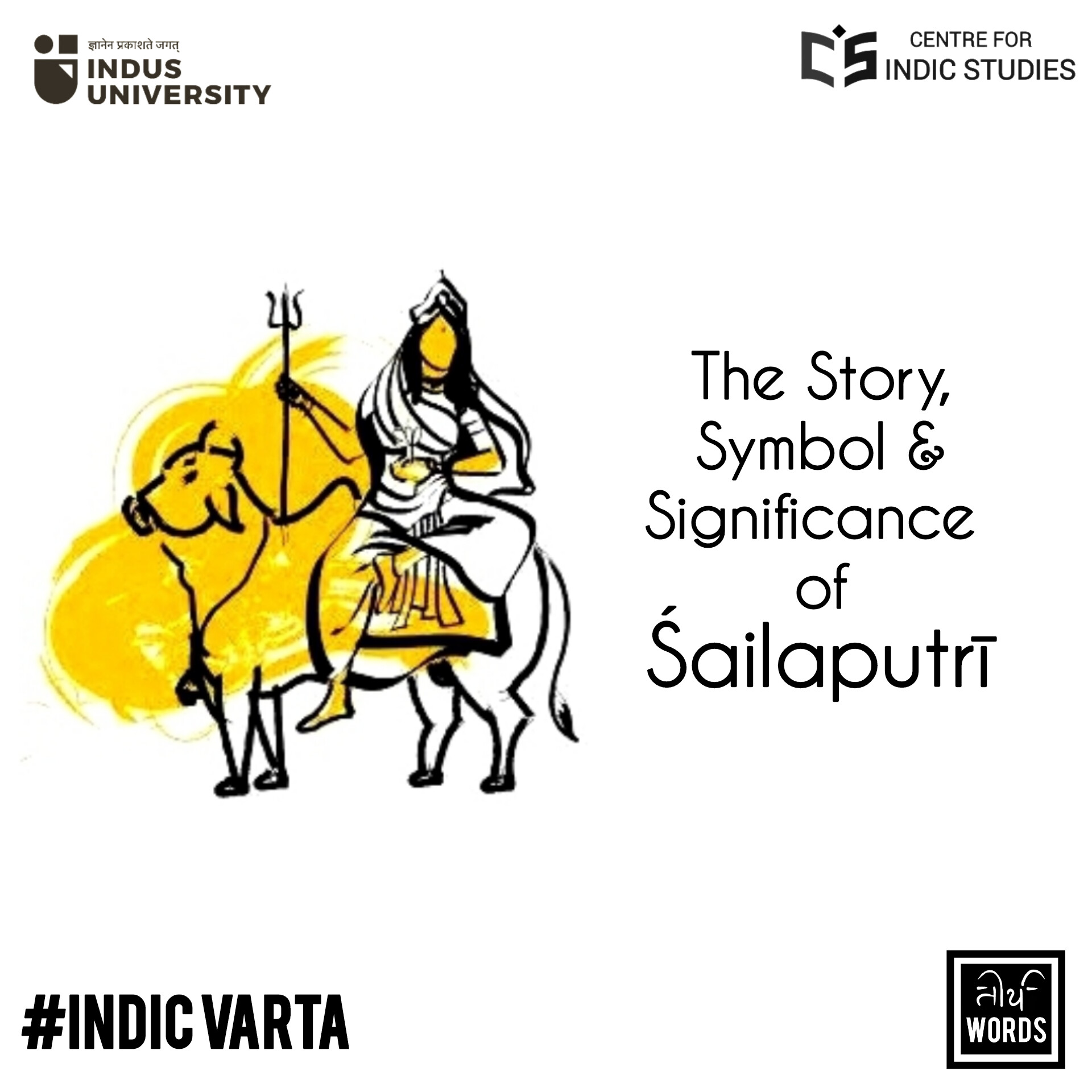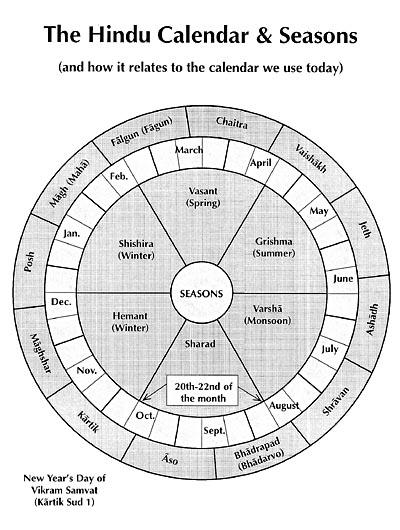- Visitor:250
- Published on: 2024-10-03 03:42 pm
The Story, Symbol, and Significance of Śailaputrī
This fundamental understanding of the nature of the two vital forces—as complementary and not adversary, as two halves of one supreme reality and not two distinct realities, as “and” and not “versus”— has been at the crux of the Sanātana Dharma and it may help us to channelize the harmonized reciprocity between both the sexes. In a world full of fights between irrational feminism and misconstrued patriarchy, the story bolsters the sustainability of compassion and devotion over contempt and resentment.

Story
So, it was a busy day and the arrangement for the yajña at king Dakṣa’s palace was in full swing. The altar was furnished and everyone was decked with robes and jewels. From the nymphs and apsarās of the heaven to the celestial deities of the five elements— all were invited with congenial etiquettes. All except Śiva, the son-in-law of the king. Why? Because, unlike the other gods and deities, he was a grotesquely ash-smeared nomad, living in the crematorium with the beastly animals and horrendously defiled paranormal beings! How could he be invited to the pristine dwellings? Moreover, Dakṣa’s favour for him skewed further when his daughter, Śatī, eloped with him, chucking off the tradition of svayaṃvara.
Now, everyone was exhilarated to be a part of the grand fête and all tuned up simmering. When Śatī heard of the event, she was eager with excitement to attend it. She implored her husband who, in turn, expressed his reluctance to grace the occasion uninvited. Appalled at the rejection of the plea, Śatī fumed with a fit of pique as all ten incandescent modes of her feminine energy manifested, threatening the balance of the cosmos. Seeing his wife nagging and conniving, Śiva permitted her to visit her paternal home.
However, Śatī was greatly underwhelmed to find the cold welcome she received from her own siblings and relatives. Further to her dismay, her repeated petitions to send a formal invitation to his husband were turned down. Her anguish heightened when her father, enraged at her request, slandered her husband with cuss words. A devoted and chaste wife that she was, her father’s rants pierced her soul more than her eardrums. Repining at her ill-conceived wish to attend the ceremony despite her husband’s injunctions, Śatī decided to immolate herself at the fiery pit of the yajña, turning it into a pyre!
Sensing the void of the divine feminine, Śiva’s dhyāna was perturbed immediately and his third eye opened in fury! The calmest and the politest of all beings was ignited with vengeful wrath! He hurried to the place of occurrence and dismantled the entire place, going ballistic to everything! Tears flowed down his cheeks and fell on the ground, turning into rudrākṣa. He lifted the corpse of Śatī on his shoulder and began the tāṇḍavanṛtya, the dance of destruction! The whole cosmos began to tremble and everyone sought Viṣṇu to intervene and save the creation from the maddening ruckus. Viṣṇu, maintaining his role to preserve the creation, hurled his divine discus, Sudarśana, and tore off the body of Śatī into fifty-one pieces which fell on different locations of Bhārata, turning into śaktipīṭhas (places of the divine feminine). Viṣṇu pacified Śiva and solaced him, saying that the eternal spirit of the divine feminine cannot be exterminated and she would once again reincarnate as the daughter of Himālaya, the greatest of the mountains. Aeons later, when she manifested as the daughter of Himālaya, she was named Śailaputrī (daughter of the mountains).
Symbol
Now, this was the story. Chances are that, unless you have been uprooted from your traditional culture by the Macaulayist education, you have heard it from your parents or grandparents. However, let us delve deeper into this episode of the itihāsa and unravel the symbolical purviews behind it. The first and the foremost lesson that can be extracted out of the story is that the fabric of the cosmos is woven by threading the cosmic masculine with the cosmic feminine and the absence of either will unsettle the very essence of creation. This fundamental understanding of the nature of the two vital forces—as complementary and not adversary, as two halves of one supreme reality and not two distinct realities, as “and” and not “versus”— has been at the crux of the Sanātana Dharma and it may help us to channelize the harmonized reciprocity between both the sexes. In a world full of fights between irrational feminism and misconstrued patriarchy, the story bolsters the sustainability of compassion and devotion over contempt and resentment.
The second underlying message that strikes our observation is that our prejudice often befalls us. Śiva stands for maṅgala (auspice) and no deed of spiritual disposition can be accomplished against his will or without his blessings. Dakṣa’s zealotry based on the mere appearance of Śiva and his constant refusal to swallow his pride despite knowing fully well the true identity of the lord only led to catastrophe. Had he been prudent and discreet enough to peep into the inner self of Śiva, he would not have belittled him. After all, he had the greatest ever son-in-law one can think of and yet he failed to embrace him owing to his petty conceit. Like Dakṣa, we too often fail to discern the piety of the great and the wise if their mere appearance deems unfit to the standard norms. Overcoming our own meanness and cultivating acceptance towards the unique, even if disagreeable at a glance, may help us find the pearl from the oyster shells.
Finally, one must not consume these divine accounts from the itihāsa texts with mortal levity. The acts of the divine beings by no means concern humane replication, rather, on the contrary, usher in the notion that these acts serve the grounds for the līlā tattva to function. The līlā tattva suggests that everything that happens at the divine realm has a purpose to cater to the divine frolics of the supreme being. For the ease of understanding, one may imagine the entire cosmos to be a theatre where everyone plays different characters or roles. When we watch a film in the theatre and our minds are encaptivated by the play of the actors, we associate our passions with the characters by cheering for the hero and the heroine while loathing the villain, forgetting the nature of reality for a certain time. However, once the play is over, we understand that the actors are playing the roles of the characters and are not the characters themselves. Thus, Dakṣa’s prejudice may be framed as a lesson to be imparted upon us rather than it being a cause of our personal censure towards him. Similarly, the demise of Śatī and the subsequent wrath of Śiva are events as real as the air and the fire and yet as emblematic as the play of the actors in a theatre.
Significance
Commemorating the metempsychosis of the ādiśakti, the primordial energy, from the previous rūpa named Śatī to the new rūpa named Pārvatī (literally meaning, “from the mountains”) or Śailaputrī (literally meaning, “daughter of mountains”), the followers of the Sanātana Dharma dedicate the first day of the Navarātri (nine nights) festival to worshipping the goddess. The day also marks the beginning of the mātṛpakṣa (the matriarchal fortnight). Some people observe fasting and perform holy rituals on the day. However, it is to be noted that fasting and other modes of ascetic sādhanā are not mandatory and anyone can pray to the divine feminine as per one’s convenient habitat.
If you are reading this far, you must have attained the grace of the devī and, if so willing, you too may join the millions of devoted people in celebrating the resuscitation of the cosmic feminine by calling her up with oblation of a flower and chanting of the mantras:
ॐ वन्दे वाञ्छितलाभाय चन्द्रार्धकृतशेखराम्।
वृषारुढां शूलधरां शैलपुत्रीं यशस्विनीम्॥
या देवी सर्वभूतेषु माँ शैलपुत्री रूपेण संस्थिता।
नमस्तस्यै नमस्तस्यै नमस्तस्यै नमो नम:॥
।। ॐ शैलपुत्री देव्यै नम: ।।
- 125 min read
- 6
- 0










